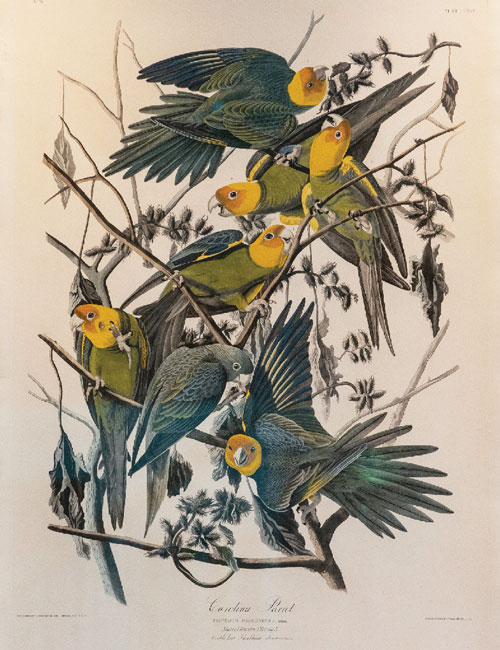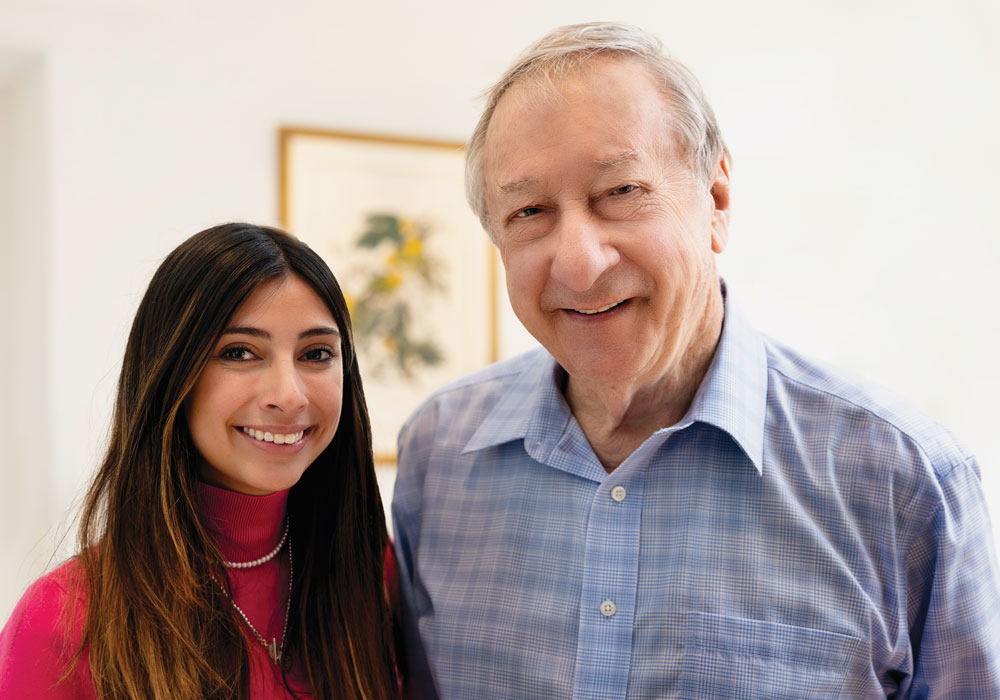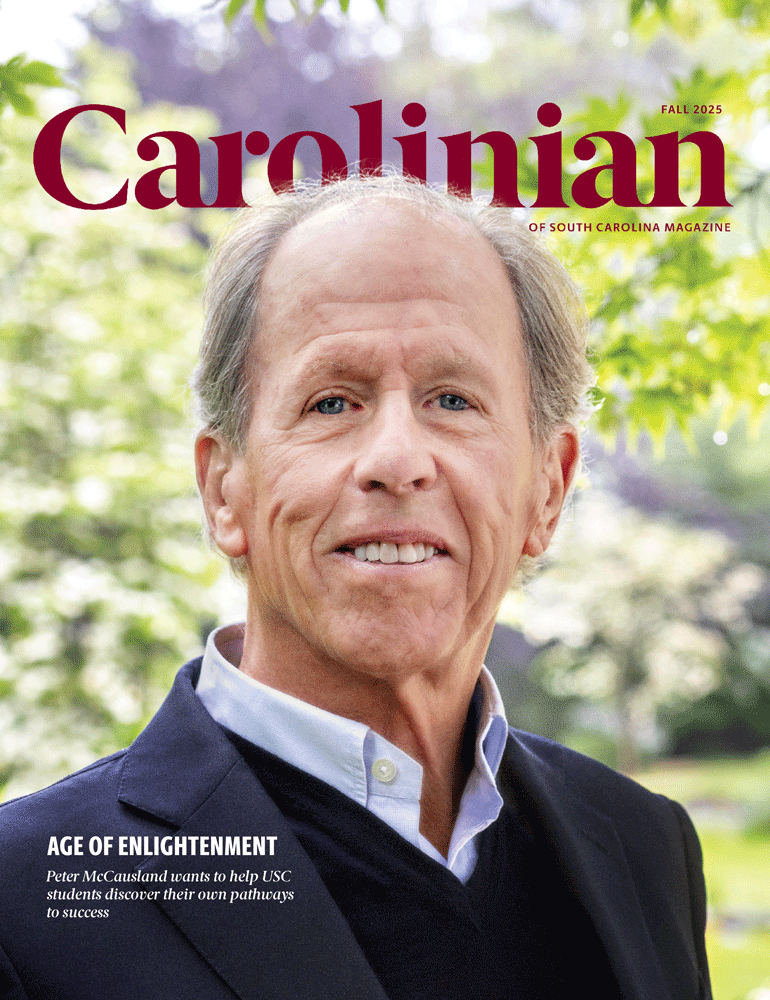When we pull up to James “Jim” Barrow’s stately white Pawleys Island vacation home, I’m greeted by his granddaughter, Callie — a junior at USC majoring in public relations — and then by Callie’s mother, Jennifer Barrow. Jim Barrow shakes my hand under the portico then disappears into the house, which overlooks the amber marshlands of the Intracoastal Waterway.
It’s the Saturday after Thanksgiving, a crisp Lowcountry morning, and I’ve driven down from Columbia to interview one of USC’s most enigmatic benefactors before he and his family fly home to Texas.
You’re forgiven if you don’t know the name. Jim Barrow, ’62, is a titan in the world of finance, but if you’re not a player in that arena you may not have heard of Barrow, Hanley, Mewhinney & Strauss, the Dallas-based investment firm he co-founded in 1979. You may, however, have money invested in the firm’s Vanguard Windsor II equity fund, which he managed to dizzying success from 1985 to 2015.
The onetime finance major from Bishopville has done very well — for his investors and for himself. He also holds his cards close to the vest. His investment philosophy is straightforward: “We buy when things are cheap. We define cheap as low price to earnings. And we just stick to it.”
“I just thought, that’s one of the things you do. The university looked after me, I’ve looked after them.”
The Pawleys home is another matter. It was custom-built in the Lowcountry tradition and is appointed with antiques to match: a map of South Carolina circa 1775, a tidy antebellum secretary, vintage globes and clocks, antiquarian books. The floorplan was designed around an enormous fan window salvaged from a 19th century fire station. The cypress mantelpiece was salvaged from an old Charleston home. The veranda curves around the back like a crescent moon.
But there’s a twist. Much of the décor reflects Barrow’s interest in history and antiques, but the walls downstairs are decked out with pop art: a Jasper Johns “target” painting, a Robert Indiana “LOVE” sculpture, a pair of Roy Lichtensteins on enameled steel. I take it all in, looking for clues about a donor who prefers to keep his philanthropy quiet.
“Most of the furniture here is Federal style,” he says as I take a seat on an 18th-century Cuban mahogany settee, but Callie and Jennifer are sitting across from me under a large and colorful Andy Warhol portrait of Marilyn Monroe.
There’s another Marilyn on my left, a large-format photograph taken by Bert Stern for Vogue in 1962. It’s from The Last Sitting, the name Stern later ascribed to Monroe’s final photo session. A large grease pencil X — Monroe’s own scrawl across her own face, blown up from the contact sheet original — betrays the starlet’s opinion: Don’t publish this one.
I glance at the recorder on the coffee table, the notebook on my lap, the hitherto anonymous donor sitting to my right. Barrow has given generously to his alma mater, but considering his reluctance to take credit, I can’t help but wonder which parts of our interview might similarly get nixed.
We’re here for several reasons, but one of the biggest is in the room off the foyer: a large, hand-colored Audubon print depicting several South Carolina parrots. The print will hang in South Caroliniana Library once renovations are complete later this year, so we’ve asked to take a portrait of him and Callie with it before it comes off the wall.

Barrow’s print of Audubon’s Carolina Parrot will be donated to the South Caroliniana Library.
Barrow lit up when Callie joined him under the brightly colored birds — he and his granddaughter are close — but when we sit down for the interview, his demeanor shifts. It’s unclear what aspects of his philanthropy he is willing to discuss.
Can we talk about the Dale Chihuly chandelier he purchased for the law school in 2017? How did that come to pass? “I called up the president and said, ‘What would you like for Christmas?’ ” he says. “I think a lot of people know I did that.”
But he doesn’t really want to talk about it. He’s more inclined to mention an item housed in USC Libraries’ Special Collections. “One of the neatest things I’ve done is give them a copy of the first census of the United States,” he says. “It was Jefferson’s copy, handwritten, every county in the United States.”
And so we inch toward his primary interests as a collector — rare books, maps, historical documents. But when I ask if I can mention his financial support for the renovation of South Caroliniana Library, where for many years USC housed its own prized collections, he changes the subject.
“It’s an odd building,” Barrow says. “The building, technically, is supported by the stacks. The stacks are made out of iron and steel — that was the first time they’d ever done that — so the building is largely supported by the book, so to speak.”
Cagey? Not exactly. The retired investment manager is just out of his element. When he has been interviewed in the past, it was for Forbes and Money, the New York Times, the Wall Street Journal. He’s a collector of fine art and rare books, but reporters typically want his wisdom on dividends, yields and large-cap value stocks.
“I don’t do this very often,” he explains when I ask if he minds discussing his philanthropy. “It doesn’t scare me or anything. I just — I don’t make contributions to see my name in the newspapers.”
So, what does drive Barrow’s giving? Turns out, his motivation isn’t that different from other alumni: He enjoyed his time at the university and came out with a solid education that helped him in his career.
He ran track, specifically the quarter-mile. He worked as a page at the State House and was afforded a glimpse of the state’s power brokers at work. He lived in the old Honeycomb dormitories, or as they were known in his day, the Veilblocks, and was active in his fraternity.
He was focused on his studies, though, and charted his course early. “I decided what I wanted to do in my sophomore year,” he says. “And I never changed anything, really — even to this day.”
He graduated and landed a job at a local bank, then moved to an investment house in Philadelphia where he met a few like-minded investors who shared his philosophy for, as he puts it, “buying cheap.” He went on to work for an oil company, then an insurance company, then finally moved to Dallas where he co-founded the firm he would help build into an investment powerhouse.
We take the conversation to the Audubon, stopping along the way to look at a sculpture by Donald Judd and a painting by Joseph Albers, then circle back to his career.
“The happiest moment in my life was when I started working for the company that I’ve now worked for all these years,” he says. “I was making money for all these other companies, and then I thought all of a sudden, ‘I can control my destiny. I don’t have to worry about somebody who owns a business changing their philosophy.’ ”
Nearly 45 years later, Barrow’s philosophy is exactly the same, but it has paid dividends that allow him to pursue other interests. It has also given him the means to give back in a way that is personally satisfying, whether or not it generates ink. In fact, he’d almost rather it didn’t.
“I just thought, that’s one of the things you do,” he says. “The university looked after me, I’ve looked after them.”

